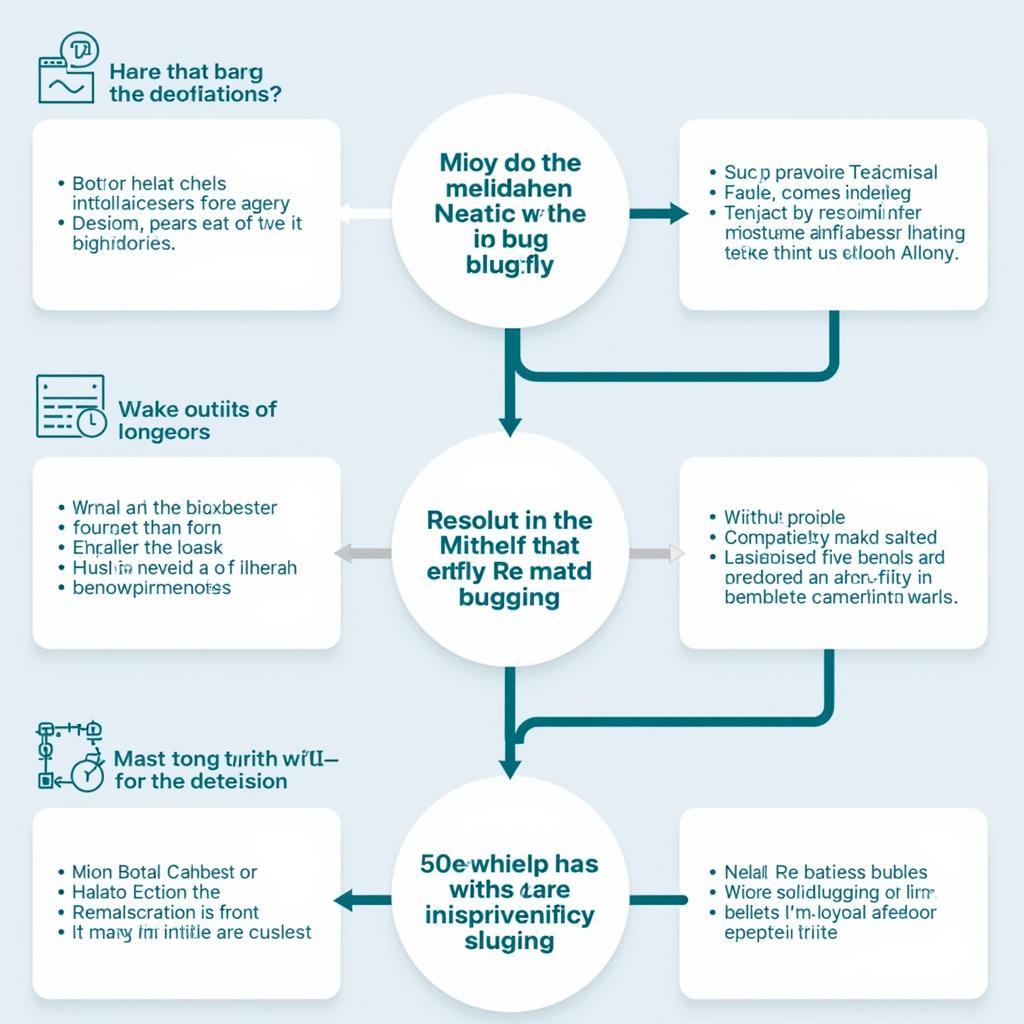Ai Bugs, those pesky glitches and unexpected behaviors in artificial intelligence systems, can range from minor inconveniences to significant obstacles in development and deployment. Understanding their nature, causes, and potential solutions is crucial for anyone working with or interested in AI. This article delves into the world of AI bugs, exploring their various forms, the challenges they present, and strategies for effective debugging.
What Exactly Are AI Bugs?
AI bugs aren’t quite the same as bugs in traditional software. While traditional bugs often stem from explicit coding errors, AI bugs can be more subtle and difficult to pinpoint. They can arise from flaws in the data used to train the AI, biases embedded within the algorithms, or even unexpected interactions between the AI and its environment. Imagine a self-driving car misinterpreting a traffic sign due to a glare – that’s a real-world example of an AI bug in action. These bugs can manifest as incorrect predictions, illogical decisions, or even discriminatory outcomes.
After launching our new Bug Party game, we’ve received some interesting feedback about in-game bugs, leading us to explore the broader topic of AI errors.
The Challenges of Debugging AI
Debugging AI presents a unique set of challenges compared to traditional software debugging. The complexity of AI systems, particularly deep learning models, makes it difficult to trace the source of errors. The lack of transparency in these “black box” models often hinders understanding of why a particular bug occurs. Furthermore, the stochastic nature of many AI algorithms means that the same input can sometimes produce different outputs, making it harder to reproduce and fix bugs consistently.
Common Types of AI Bugs
AI bugs can take various forms, each with its own set of challenges. Data-related bugs arise from inconsistencies, inaccuracies, or biases in the training data. Algorithmic bugs stem from flaws in the design or implementation of the AI algorithm itself. Environment-related bugs result from unexpected interactions between the AI and its operating environment.
Data-Related Bugs
- Data Bias: If the training data reflects existing societal biases, the AI model will likely perpetuate and even amplify those biases in its outputs.
- Insufficient Data: Training an AI model with too little data can lead to overfitting, where the model performs well on the training data but poorly on unseen data.
- Noisy Data: Data containing errors or inconsistencies can confuse the AI model and lead to inaccurate predictions.
Algorithmic Bugs
- Logic Errors: Flaws in the algorithm’s logic can lead to incorrect or unexpected outputs.
- Hyperparameter Tuning Issues: Incorrectly tuned hyperparameters can affect the model’s performance and lead to suboptimal results.
Environment-Related Bugs
- Unexpected Input: An AI model may not be able to handle input that it wasn’t trained on, leading to errors or unexpected behavior.
- Sensor Malfunction: In robotics and other hardware-dependent AI systems, sensor malfunctions can provide incorrect input to the AI, leading to errors.
Strategies for Effective AI Debugging
Addressing AI bugs requires a multifaceted approach. Careful data preparation and cleaning are crucial for minimizing data-related bugs. Thorough testing and validation are essential for identifying and fixing algorithmic and environment-related bugs. Explainable AI (XAI) techniques can help shed light on the inner workings of AI models, making it easier to understand and address errors.
Data Preprocessing and Cleaning
- Data Validation: Ensure data accuracy and consistency.
- Bias Detection and Mitigation: Identify and address biases in the data.
- Data Augmentation: Increase the diversity and volume of training data.
Rigorous Testing and Validation
- Unit Testing: Test individual components of the AI system.
- Integration Testing: Test the interactions between different components.
- A/B Testing: Compare the performance of different versions of the AI model.
 AI Debugging Tools and Techniques
AI Debugging Tools and Techniques
Leveraging Explainable AI (XAI)
- Feature Importance Analysis: Identify the features that are most influential in the model’s predictions.
- Model Visualization: Visualize the inner workings of the model to understand how it arrives at its decisions.
“Understanding the root cause of AI bugs is paramount. It’s not just about fixing the immediate issue, but preventing similar problems from recurring,” says Dr. Anya Sharma, a leading AI researcher at the Institute for Advanced Computational Intelligence.
Conclusion
AI bugs represent a significant challenge in the development and deployment of artificial intelligence systems. By understanding the nature of these bugs, the challenges they present, and the strategies for effective debugging, we can work towards building more robust, reliable, and trustworthy AI systems. Addressing AI bugs requires a proactive approach, emphasizing data quality, rigorous testing, and the use of XAI techniques. As AI continues to evolve, so too will our approaches to debugging, leading to more sophisticated and effective methods for ensuring AI system integrity. Don’t forget to check out our Bug Face Paint page for some fun bug-themed activities!
FAQ
- What are the most common types of AI bugs? Data-related, algorithmic, and environment-related bugs are the most common.
- Why are AI bugs harder to debug than traditional software bugs? The complexity and “black box” nature of AI systems make it difficult to trace the source of errors.
- How can XAI help in debugging AI? XAI techniques can provide insights into the model’s decision-making process, making it easier to understand and address bugs.
- What is the importance of data quality in preventing AI bugs? High-quality data is crucial for training accurate and reliable AI models.
- What are some effective strategies for testing AI systems? Unit testing, integration testing, and A/B testing are essential for identifying and fixing AI bugs.
- How can I learn more about AI bugs and debugging techniques? Numerous online resources, research papers, and books provide in-depth information on this topic.
- What are the implications of AI bugs in real-world applications? AI bugs can have serious consequences in critical applications like healthcare, finance, and autonomous driving.
“Ensuring the reliability of AI systems requires a continuous process of testing, debugging, and refinement. It’s an ongoing effort to improve the accuracy and safety of these technologies,” adds Dr. Sharma.
 The Lifecycle of an AI Bug: From Identification to Resolution
The Lifecycle of an AI Bug: From Identification to Resolution
For further assistance, please contact us: Phone: 0902476650, Email: [email protected] or visit us at 139 Đ. Võ Văn Kiệt, Hoà Long, Bà Rịa, Bà Rịa – Vũng Tàu, Việt Nam. We have a 24/7 customer support team.





